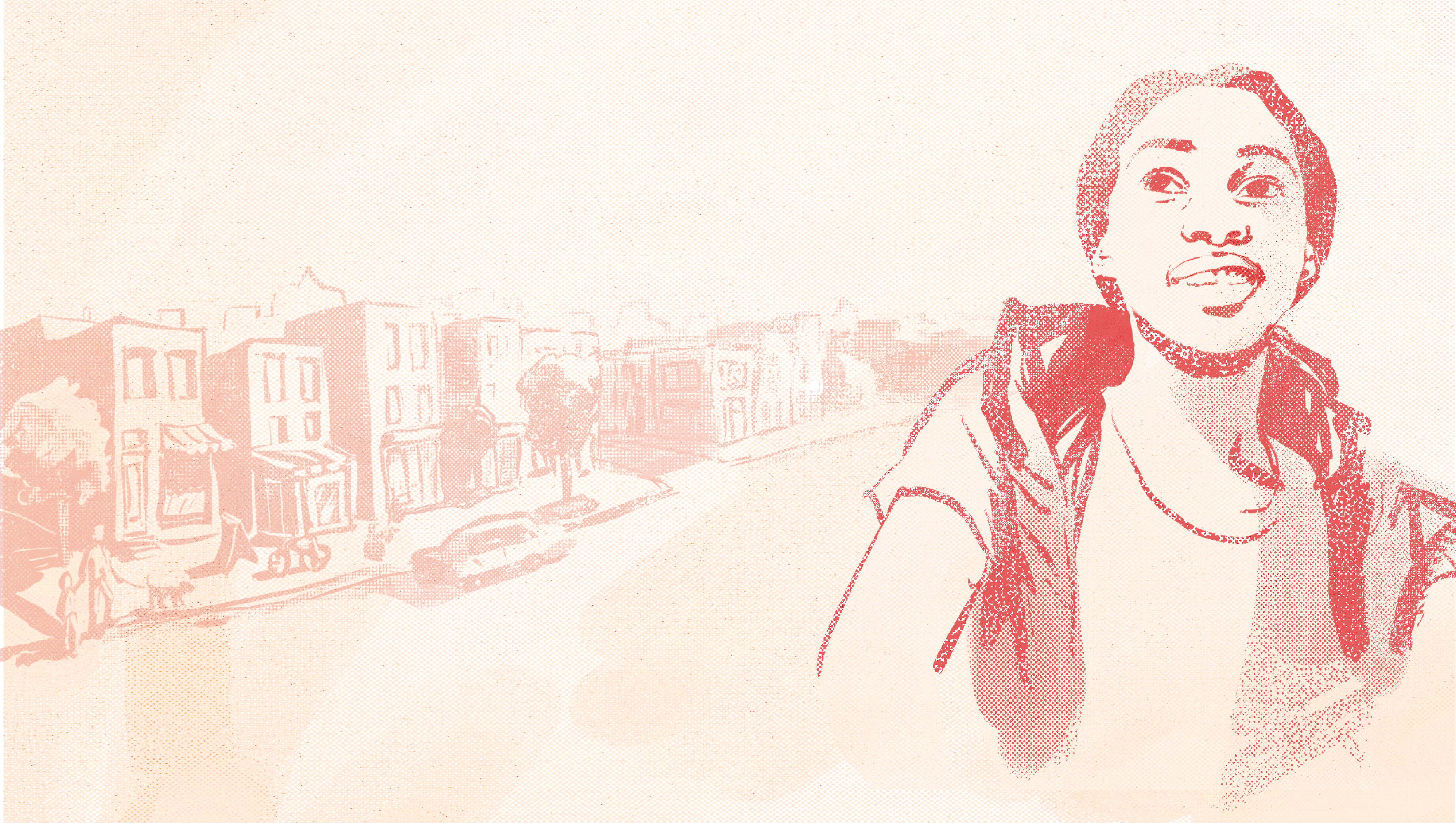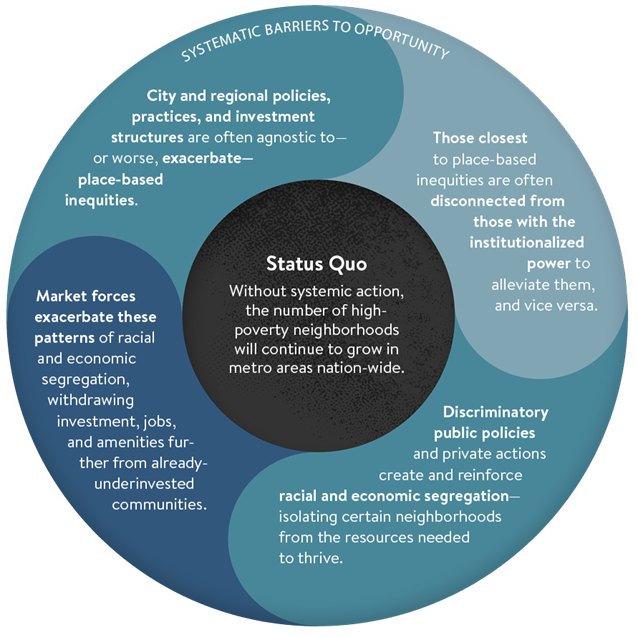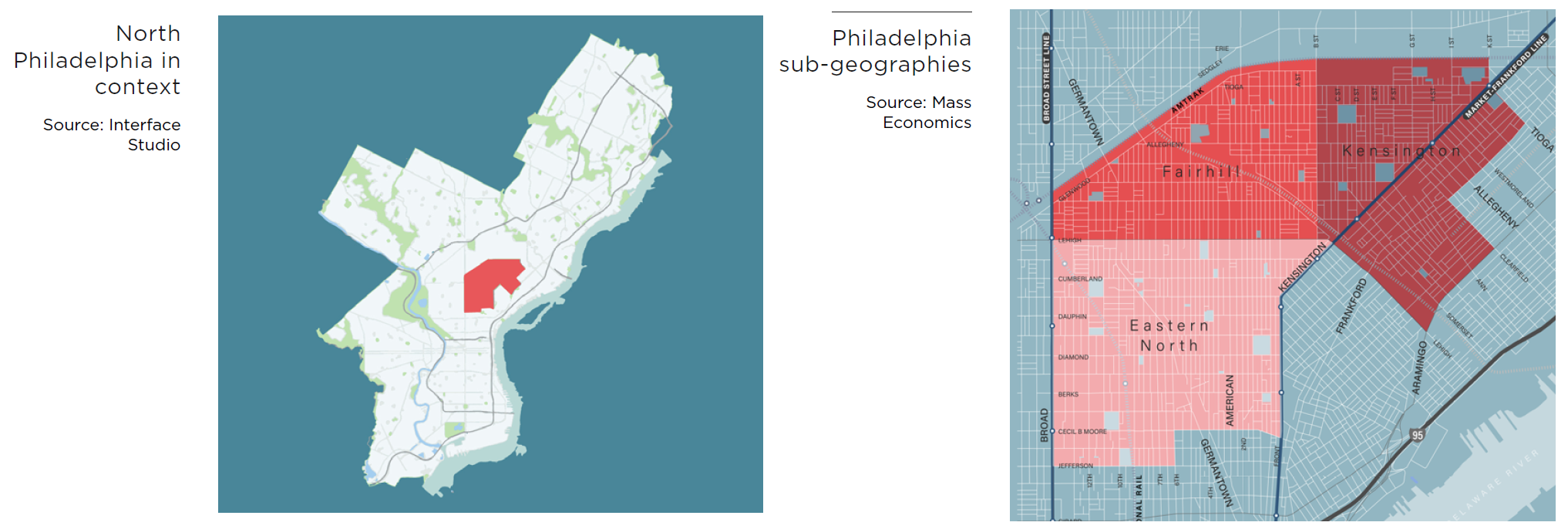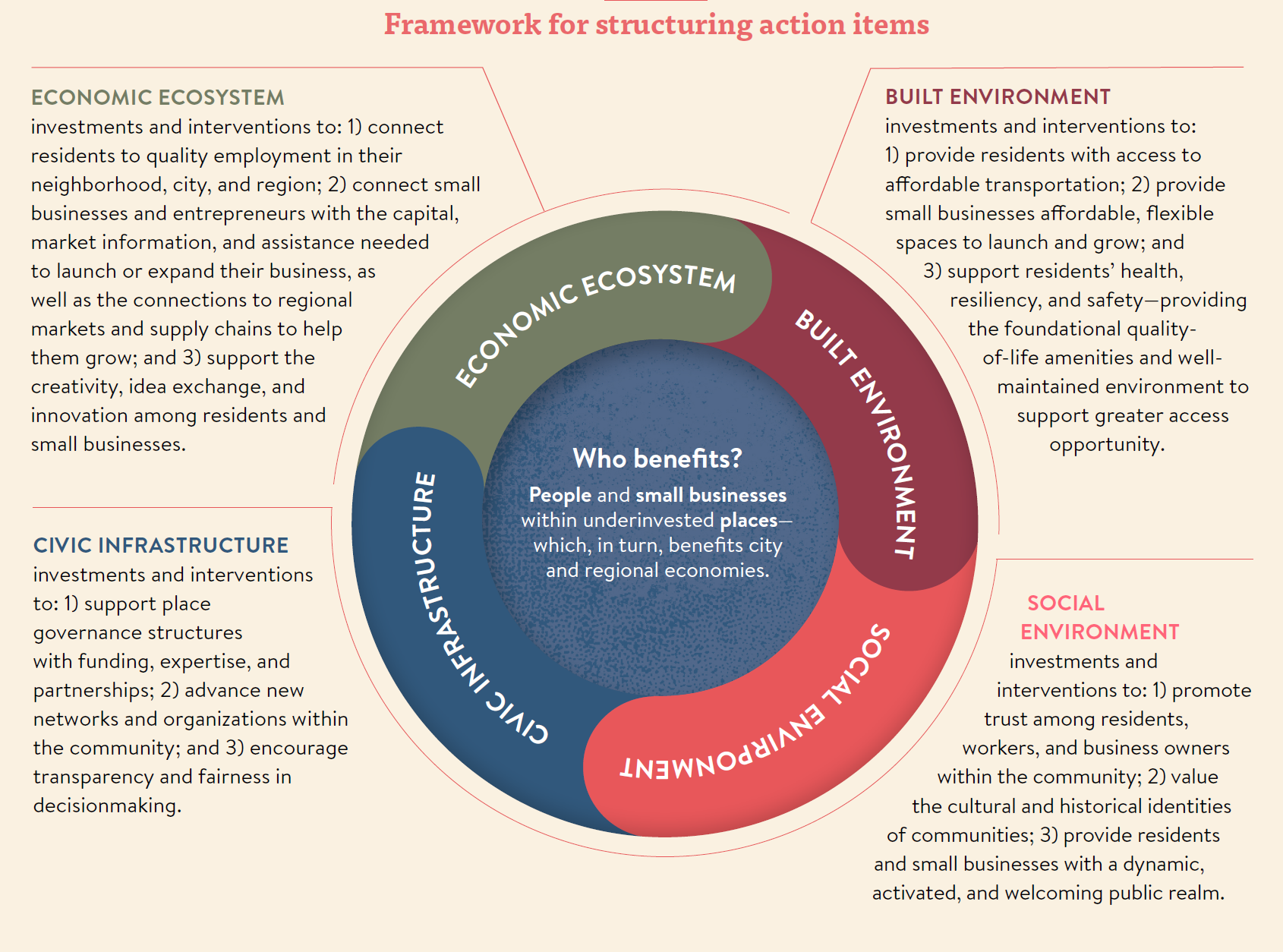
Community-centered
economic inclusion
Editor’s Note: To learn more about year-one outcomes from cities implementing community-centered economic inclusion, please see this impact brief released in April 2022.
The original version of this report used the term “community-rooted economic inclusion” to refer to the approach presented within; the term was also used in the report’s former title. In October 2021, we changed the report’s terminology to “community-centered economic inclusion” to clearly distinguish our approach from that of another organization, Communities in Partnership, that uses the term “community-rooted” in its work.
DOWNLOADS
The United States is characterized by a persistent geography of racial and economic injustice, in which people of color and low-income people are concentrated in underinvested neighborhoods and systematically isolated from the resources, amenities, and opportunities needed to thrive. COVID-19 has magnified the harms of this enduring intersection between race, poverty, and place—literally killing people in real time for living in racially and economically segregated neighborhoods—but it only shined new light on systems that have long been broken.
Facing an inflection point of inequity, there has never been a greater urgency for community, city, and regional leaders to advance bold solutions that foster long-overdue investment and opportunity within disinvested communities—and to do so in a way that benefits existing residents and small businesses within these communities.
This playbook provides local leaders with an actionable set of tools to create more just landscapes of neighborhood opportunity through community-centered economic inclusion—a new, multidisciplinary and systems-level approach to building community wealth within underinvested places, while driving city and regional economic growth and development that centers equity at its core.
The guidance in this playbook is derived from a pilot initiative implemented in Indianapolis, Los Angeles and Philadelphia between fall 2019 and January 2021. The Local Initiatives Support Corporation (LISC), in collaboration with national and local funders, supported the implementation of community-centered economic inclusion in a select set of underinvested districts in each city. The Brookings Bass Center for Transformative Placemaking documented the process in each community to translate actionable lessons from that work into this playbook. For more information, see page 8 in the Playbook.
Why traditional community and economic development aren’t working to meet today’s growing challenges
Despite billions of dollars spent on place-based revitalization initiatives over the past 25 years, the number of high-poverty neighborhoods in the U.S. doubled between 1980 and 2010, and remains persistently high.
This playbook argues that the persistence of neighborhood poverty can be attributed to four major barriers and the inability of our siloed and misaligned systems and structures to address them (Figure 1). For more information, see page 9 in the Playbook.
Figure 1. Four systemic barriers contribute to the persistence of neighborhood poverty

Community-centered economic inclusion: An approach to building wealth in underinvested places, while driving more equitable city and regional growth
Community-centered economic inclusion concurrently addresses these barriers through a combination of equity-focused structural changes (shifting policies, practices, and resource flows) and relational changes (shifting power dynamics) implemented at a distinct scale, scope, and level of integration. For more information, see page 14 in the Playbook.
Targeted, strategic scale
- Unlike traditional regional economic development or community development, the scale of community-centered economic inclusion requires identifying and investing in strategic sub-geographies that have the greatest potential to reduce economic inequity community, city, and region-wide.
Multidisciplinary, systems-level scope
- Community-centered economic inclusion’s scope breaks down disciplinary siloes—integrating community, economic, and workforce development efforts together with capacity-building efforts—to nurture long-overdue investments within communities, while connecting residents and small businesses to their regional economies.
Level of integration
- The integrated nature of community-centered economic inclusion requires key holders of institutionalized power at the city and regional level to forge long-term partnerships with underinvested communities—making community-led priorities more achievable and impactful, and city- and region-led efforts more equitable and accountable to community interests.
Five steps for strategic action
This playbook presents five actionable steps community, city, and regional leaders can take to design and implement community-centered economic inclusion in their own local contexts.
1. Where
Select sub-geographies with the potential to make a transformative impact on community, city, and regional economic inequities. The playbook provides concrete guidance on the necessary characteristics sub-geographies should possess to maximize impact, the data to identify these characteristics, and the local, city, and regional partnerships required to launch successful place-based revitalization within these areas. For more information, see page 16 in the Playbook.
Figure 2. North Philadelphia’s three sub-geographies

2. Who
Organize a cross-sectoral coalition that brings together key holders of institutionalized power at the city and regional level with communities to co-own place-based investment strategies. The playbook explains the functions a cross-sectoral coalition should fulfill, the stakeholders that must be engaged to ensure equity and success, and strategies to build trust and sustainable partnerships among often-disconnected groups. For more information, see page 27 in the Playbook.
3. Why
Analyze market opportunities and strengths within geographies—as well as the barriers residents and small businesses face in benefiting from them—to determine policy and practice shifts. The playbook offers insight into the quantitative data and qualitative research and engagement activities needed to craft market-informed, strengths-based, and community-defined strategies. For more information, see page 35 in the Playbook.
Figure 3. Resident, coalition, and employer engagement can identify often-undervalued community strengths

4. What
Commit to an action-plan that leverages place-based investments for community benefit and integrates community, economic, and workforce development efforts within underinvested communities to connect them to their regional economies. The playbook presents a guiding framework, principles, and on-the-ground examples for investing in communities’ economic ecosystems, built environment, social environment, and civic infrastructure. For more information, see page 46 in the Playbook.
Figure 4. Community-centered economic inclusion supports investments in places’ economic ecosystems, built environment, civic infrastructure, and social well-being

5. How
Develop shared mechanisms for sustainability, accountability, and shifting the power balance over the long-term. The playbook details lessons on how to set up action-plans for success over the three-year implementation period, measure progress, and build upon it to enhance community power and advocate for larger-scale change. For more information, see page 58 in the Playbook.
Conclusion
As our nation reckons with the increasingly perilous consequences of neighborhood poverty in the wake of COVID-19, one thing is clear: No path forward should lead us back to the status quo.
An economy in which entire communities are systematically excluded is not sustainable, and the fate of our cities—and our nation—depends on creating equitable landscapes of opportunity where more people, small businesses, and places can thrive. Community-centered economic inclusion provides local leaders with the tools to lay the groundwork for this equitable future, and to do so in a way that is accountable to communities who have for too long been denied justice.
Graphic design by Cecily Anderson, anagramist.com.



